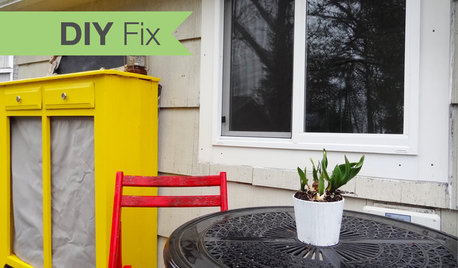Can blossom end rot tomatoes be saved?
Ecopal
12 years ago
Featured Answer
Comments (14)
taz6122
12 years agolast modified: 9 years agodigdirt2
12 years agolast modified: 9 years agoRelated Professionals
Ashburn Landscape Architects & Landscape Designers · Chattanooga Landscape Architects & Landscape Designers · Middle River Landscape Architects & Landscape Designers · Quincy Landscape Architects & Landscape Designers · Rancho Palos Verdes Landscape Architects & Landscape Designers · Cupertino Landscape Contractors · Rosemount Landscape Contractors · Whittier Landscape Contractors · Arkansas City General Contractors · Deer Park General Contractors · Panama City Beach General Contractors · Westchester General Contractors · Aventura Decks, Patios & Outdoor Enclosures · Billerica Decks, Patios & Outdoor Enclosures · Del City Decks, Patios & Outdoor Enclosuresangie83
12 years agolast modified: 9 years agotaz6122
12 years agolast modified: 9 years agolewski
12 years agolast modified: 9 years agotaz6122
12 years agolast modified: 9 years agoEcopal
12 years agolast modified: 9 years agolazy_gardens
12 years agolast modified: 9 years agodigdirt2
12 years agolast modified: 9 years agocalifornian
12 years agolast modified: 9 years agob_kct
12 years agolast modified: 9 years agojimster
12 years agolast modified: 9 years agocandie1230
12 years agolast modified: 9 years ago
Related Stories

EDIBLE GARDENSSummer Crops: How to Grow Tomatoes
Plant tomato seedlings in spring for one of the best tastes of summer, fresh from your backyard
Full Story
GARDENING AND LANDSCAPING8 Rot-Resistant Woods for Your Outdoor Projects
No need for chemical treatments on your deck or pergola. These woods stand up to weather, insects and time beautifully on their own
Full Story
COLORColor of the Week: Spring Blossom Yellow
Tired of winter yet? Bring on spring with our featured color of the week
Full Story
KITCHEN DESIGN9 Ways to Save on Your Kitchen Remodel
A designer shares key areas where you can economize — and still get the kitchen of your dreams
Full Story
KITCHEN DESIGNThe Cure for Houzz Envy: Kitchen Touches Anyone Can Do
Take your kitchen up a notch even if it will never reach top-of-the-line, with these cheap and easy decorating ideas
Full Story
HOUZZ TOURSMy Houzz: High End Meets Budget Friendly in Toronto
Splurging selectively and saving elsewhere, a Canadian family gets a posh-looking home that matches their vision
Full Story
GREAT HOME PROJECTSUpgrade Your Windows for Beauty, Comfort and Big Energy Savings
Bid drafts or stuffiness farewell and say hello to lower utility bills with new, energy-efficient windows
Full Story
REMODELING GUIDESWhere to Splurge, Where to Save in Your Remodel
Learn how to balance your budget and set priorities to get the home features you want with the least compromise
Full Story
Replace Your Windows and Save Money — a How-to Guide
Reduce drafts to lower heating bills by swapping out old panes for new, in this DIY project for handy homeowners
Full Story
KITCHEN CABINETS9 Ways to Save Money on Kitchen Cabinets
Hold on to more dough without sacrificing style with these cost-saving tips
Full StoryMore Discussions







angie83